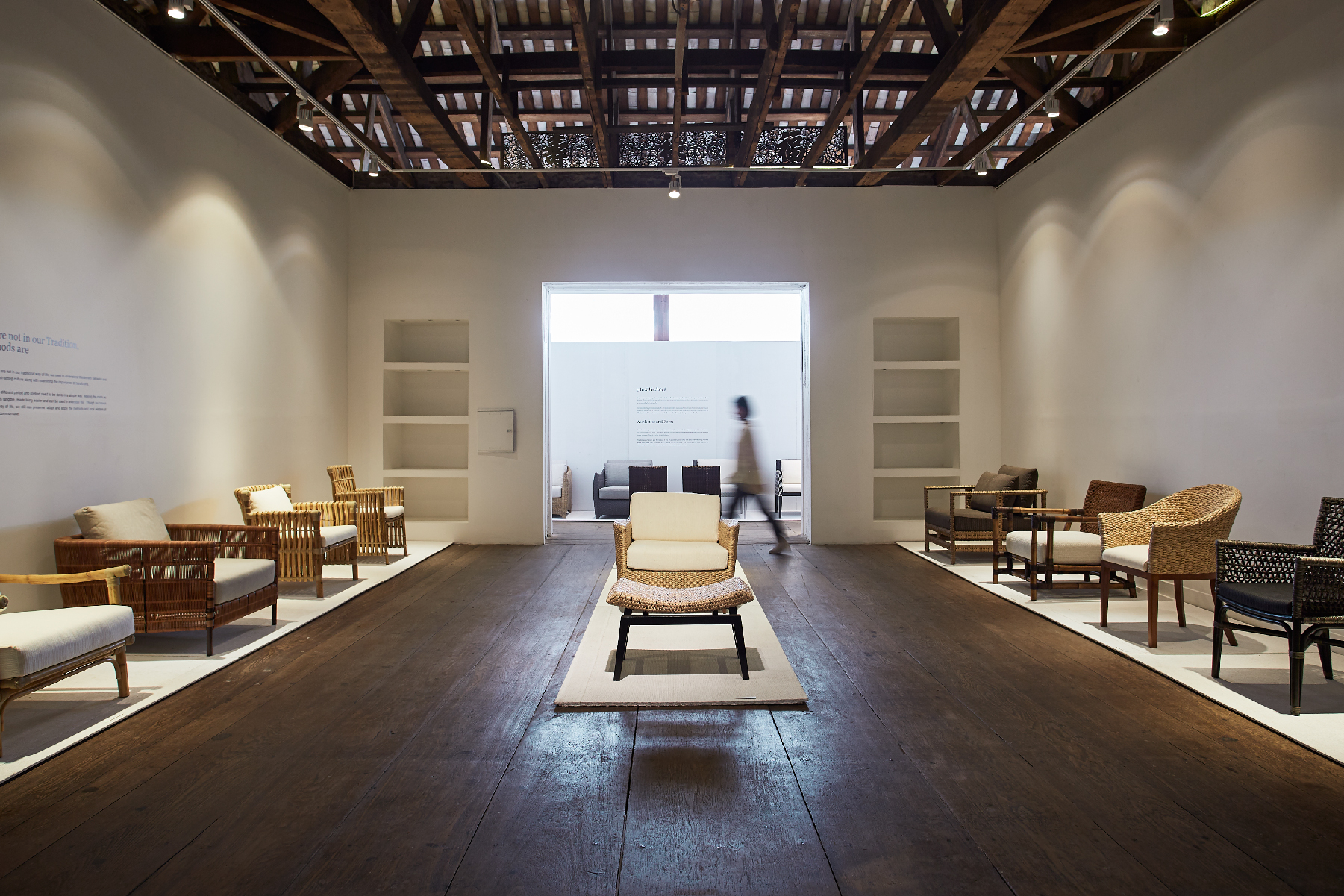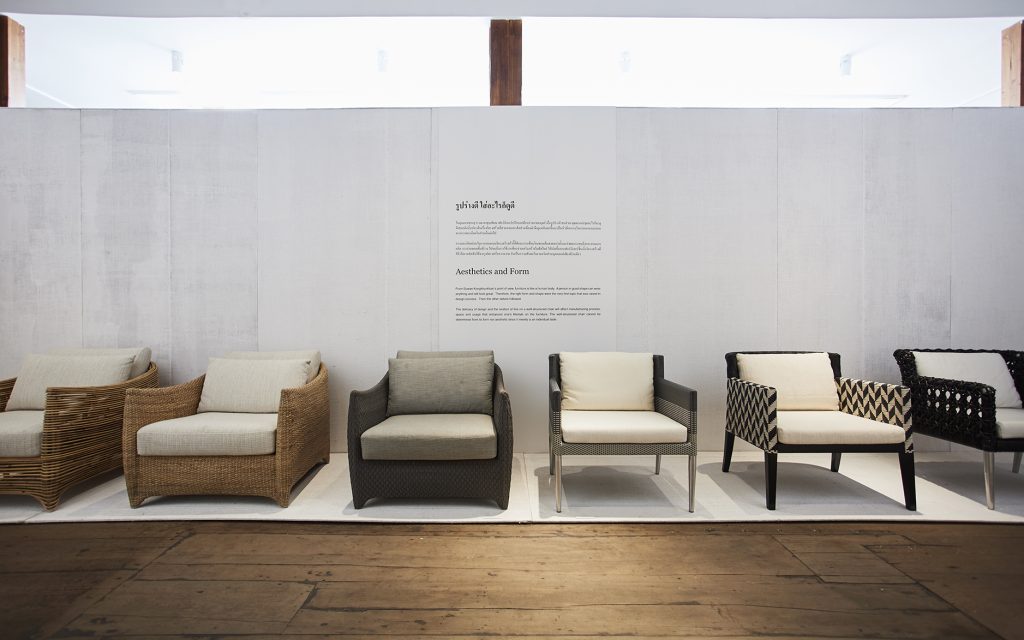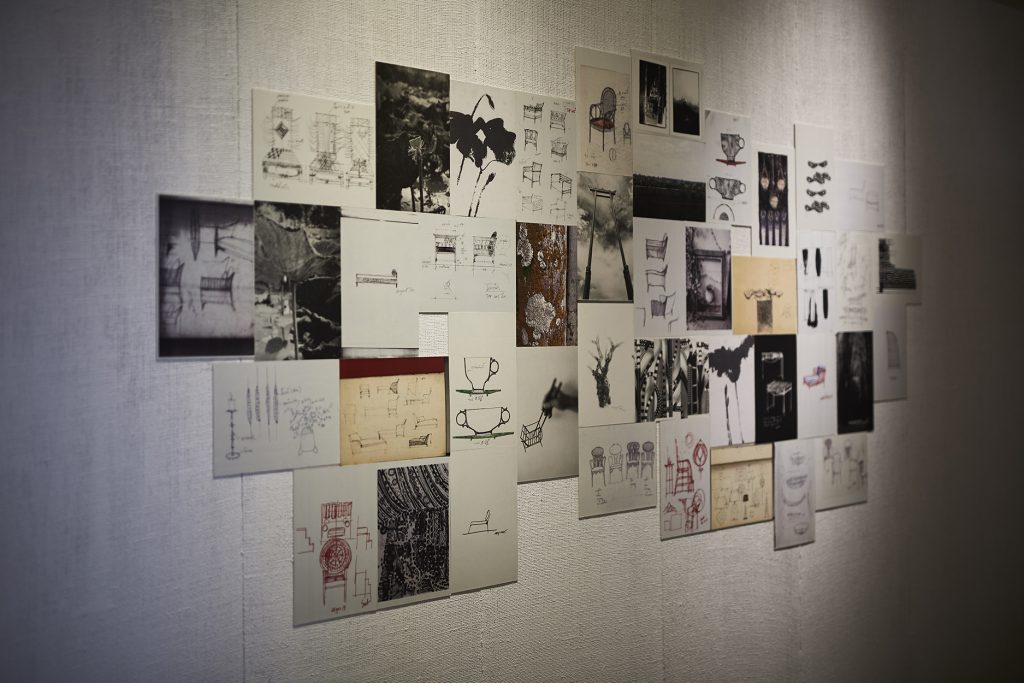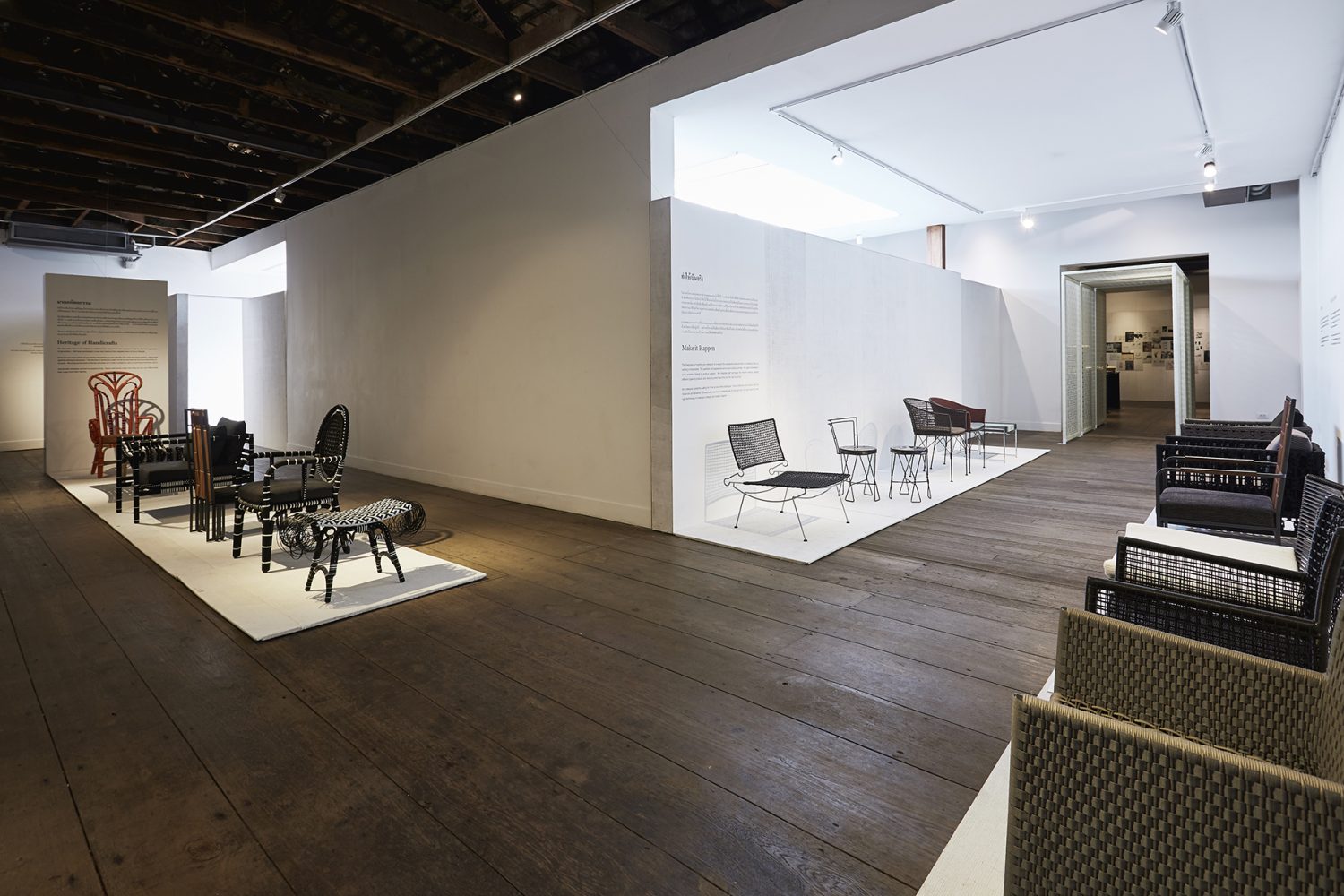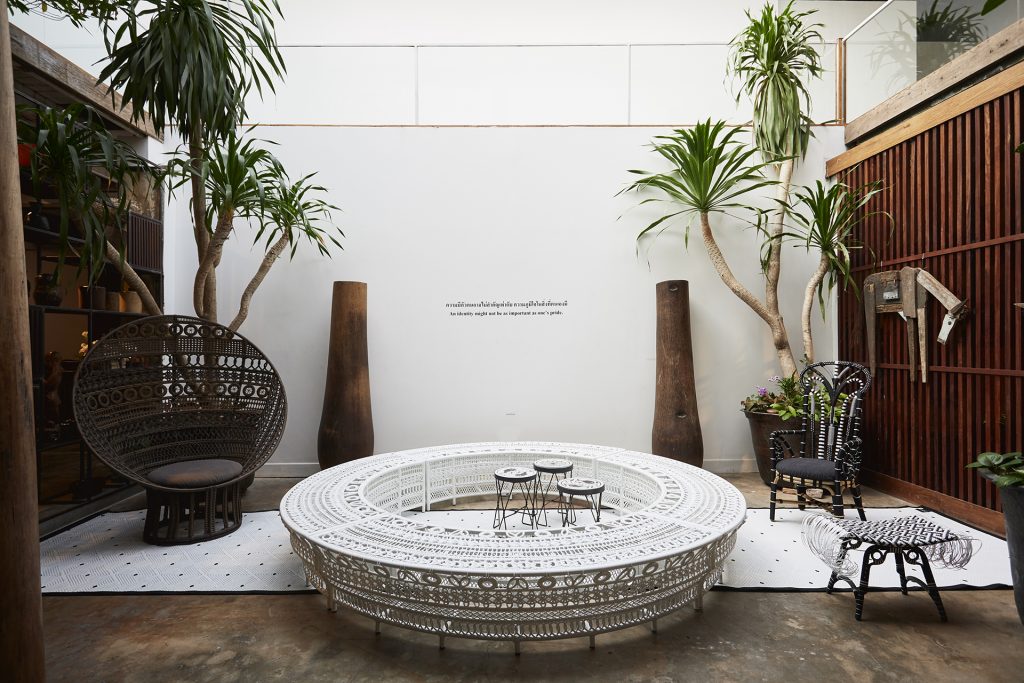ON THE OCCASION OF SUWAN KONGKHUNTHIAN’S 30 YEARS IN DESIGN WHICH WAS PRESENTED IN THROUGH THE EXHIBITION ‘SURVIVAL OF CRAFT, 1989 TO 2020’ BY THE BANGKOK-BASED CONTENT DESIGN STUDIO, ISSARAPHAP, DOONYAPOL SRICHAN OF PDM WROTE AN OPEN LETTER TO HIS MASTER
TEXT: DOONYAPOL SRICHAN
PHOTO COURTESY OF ISSARAPHAP
(For Thai, press here)
The sun was glaring in the late morning at Yothaka factory, situated in Lat Lum Kaeo district of Pathum Thani province. After 5 bus transits from the city center, everything was still fresh in my memory. With a passion in furniture design, my own personal tenacity, and suggestion from an older friend, I found my way here to the place where I learned all that was needed to be learned about furniture design, from the very master of the craft.
Suwan Kongkhunthian accepted me as one of his interns in 2005 and opened my eyes as a design student who was, back then, still very much confined by the thought processes and disciplines of industrial design. I was being introduced to the novel value of design by closely watching the skilled craftsmen and women weaving, intertwining and binding threads and strips on complicated furniture structures. They were precise, consistent and methodological. Computers were turned off while their hands did all the work. I learned about color ratios in the way that I had never known or understood before. Everything was an implication of how fortunate I was to be able to learn how to swim again in an entirely new pool of knowledge.
Suwan Kongkhunthian’s furniture design created under the brand Yothaka has evolved from local wisdoms and has been developed to possess its own idiosyncrasies and the aesthetics that can be appreciated universally. Many of the details are impossible to be broken down into working drawings and manufactured using industrial processes. Yothaka therefore takes the semi-industrial process, which explains all the years the brand invests in training its craftsmen and women into masterful artisans.
Yothaka’s design has long been recognized at an international level. The brand’s furniture creations have made their way to world-class resorts and hotels, many are selected and showcased in leading museums across Asia. I learned about the art of design, historical approaches to the discipline, the beauty and aesthetics, the rhythms and proportions of furniture that cannot be found in any western textbooks. I was schooled about the importance of numbers, tiny differences in millimeters and the effects they could potentially cause from users’ postures to sales figures. I was made aware of how raw materials can increase their values in hundred-folds when they are given the spirit instilled only in Yothaka’s design.
As I grew older, the place where I learned about creative business changed from the factory to the office, to my own home, restaurants, and fairs, both in Thailand and overseas. During this decade of growth, I had witnessed the storm Yothaka had gone through in order to take its design out into the world. If we look at the very core of it all, it is undeniable that Yothaka is one of Thailand’s country brands that has had incredible commercial success and achievement in not only introducing but making the world recognize Thai wisdom and identity.
If we were to look at Yothaka’s furniture as a cultural commodity, the exhibition, Survival of Craft (1989-2020), held as a part of Bangkok Design Week 2020, would be able to paint a better and more elaborate picture about the process and method values which can be transported and transpired through a contemporary creation of design.
The exhibition has Issaraphap in charge of the design. For one entire year, the up-and-coming design collective revisited Suwan Kongkhunthian’s life, interviewing him about his insights and thoughts, before translating everything into a book and an exhibition. Survival of Craft (1989-2020) occupies the second floor of ATT 19 in Charoenkrung neighborhood of Bangkok with every dimension of its story being told in a tasteful, delicate and rhythmically intertwined narrative. The exhibition begins with the time when water hyacinth became incredibly popular as a material of choice for furniture making. The plant, which was once viewed as a form of river waste, was researched and developed into a valuable material with the helping hand of design. The trend had turned ‘waste into gold’. That was the expression people were using. And while the success was at a minimum with the domestic market, the people overseas were blown away by the alchemy behind it all. Massive export orders ensued. In the time when intellectual property laws were not that strongly enforced, many were profiting big time from what Yothaka had initiated.
The exhibition space was curated to take viewers through the changes of the brand’s novel design repertoire. It includes the experimentation and introduction of new materials in the time when water hyacinth reached its peak in the market. It was a monumental shift. New methods were invented for the creative and manufacturing process. Created as a result are masterful re-rendering of materials, from Lygodium (climbing ferns), to paper and many different types of plastic strips. As market demands soar, Yothaka keeps the context of its high level craftsmanship intact. Several works created a decade ago have become the brand’s classic items that can still be sold even today.
Survival of Craft (1989-2020) shows everyone how the ability to adapt to changes in the market can contribute vehemently to the brand’s strength and identity in the most unexpected levels. There were times when I couldn’t even imagine the source of inspiration that enables him to continue his design creations at such quality, quantity and consistency. But then I saw a message on one of the walls inside of the exhibition space, and finally I understood–it has always been about how he chooses to live his life.
‘For me, taste is about how you want to live. As a designer, you should learn to live well. Once you understand how to enjoy life, you can then use that experience to make your work more dynamic. Your knowledge of enjoyment will empower you to create new designs again and again.’
The exhibition ends with a structure of an old chair whose oriental aesthetics bespeak unique beauty of traditional proportions and craftsmanship details. The chair stood near a white wall with a description provided, having said that it was designed by Kongkhunthian during his senior year at the university (1975 to be precise). The chair was there, intentionally, as proof of the oriental root from which Yothaka has evolved from. The brand has never taken any detour nor has it pretended its own origin and existence, even during the time when everyone is struggling to come up with an identity in the highly globalized market. The love for his own roots is what has always been infused and expressed through Yothaka’s epic body of work.
Now in his 70s, Kongkhunthian still lives and breathes work. Design has become an integral part of every aspect of his life. What is particularly interesting about the exhibition is the fact that it is a continuum of a publication that features the special collection of Kongkhunthian’s furniture design. With 240 pages, the book is executed into something that has never been done before in Thailand, and it showcases the monumental contribution of the veteran designer, the love he has for his own country expressed through the legacy of design wisdom he has passed on to people in the later generations throughout the three decades of his glorious career.
Survival of Craft (1989 to 2020) opens now until 22nd February 2020 at ATT 19, Charoenkrung 30.

